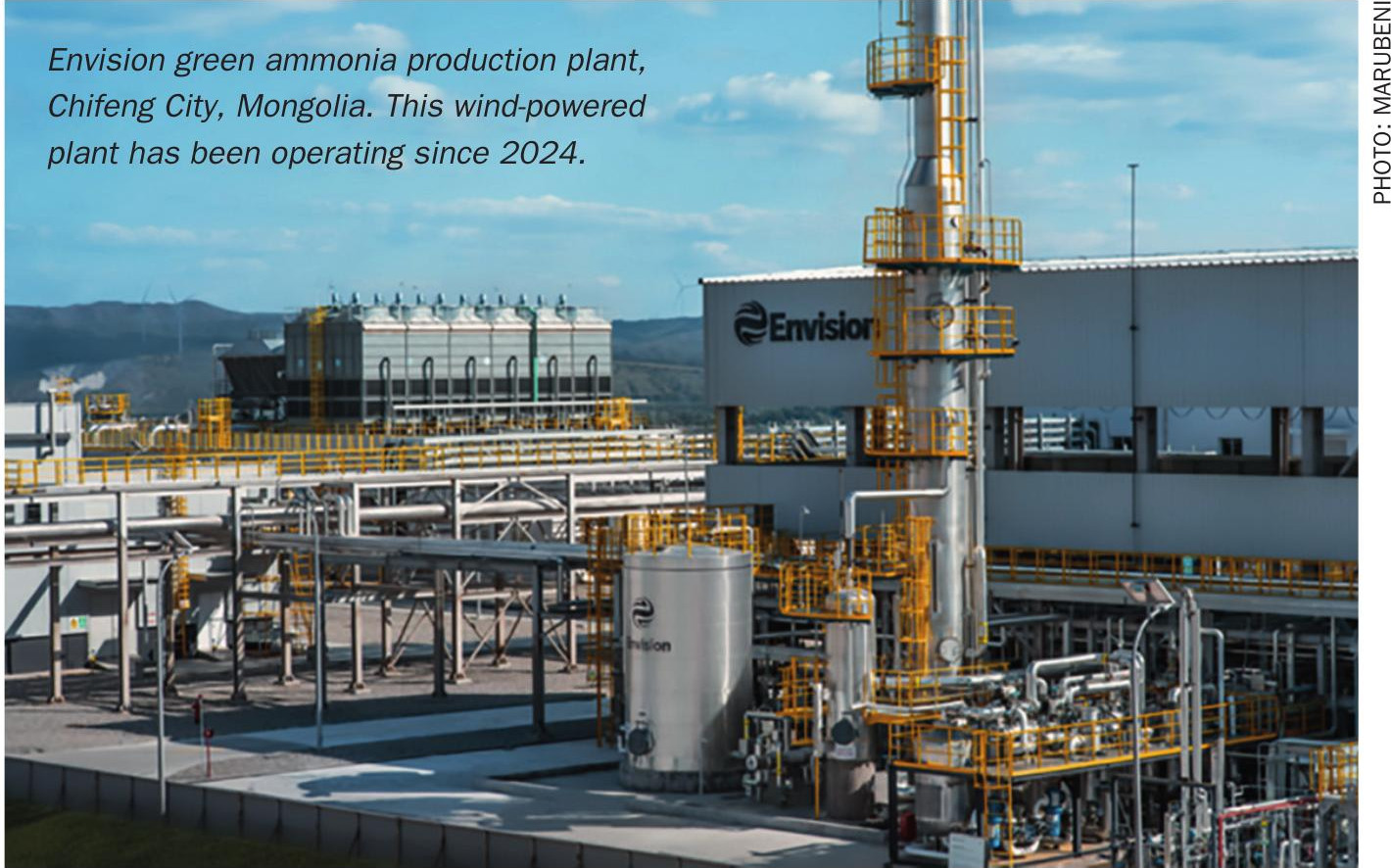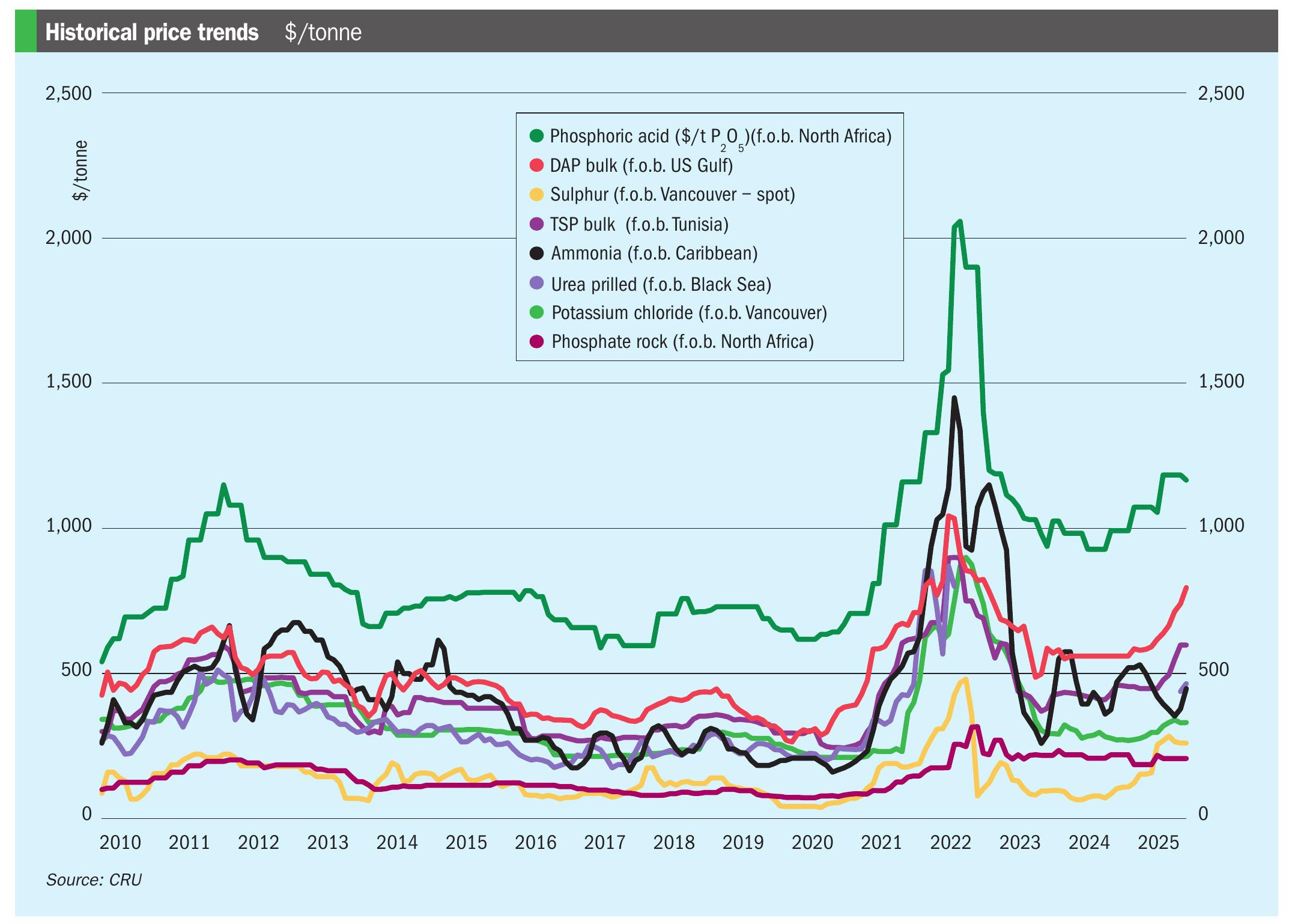Sulphur 420 Sep-Oct 2025

15 September 2025
Battery materials driving sulphur consumption growth
CRU INSIGHT
Battery materials driving sulphur consumption growth
In this CRU Insight, Peter Harrisson reports on how battery materials have become a powerful driver of sulphur consumption growth. Battery materials – especially nickel via HPAL and, to a lesser extent, lithium clays and phosphate-based chemistries – have rapidly increased sulphur demand from a negligible share in 2000 to a meaningful and rising portion by 2025–2030, with future growth hinging on battery chemistry mix and extraction routes.

From the beginnings of the modern sulphur industry, fertilizer and industrial markets have been the primary drivers of demand. However, over the last 25 years metals have accounted for an increasing share of consumption. More recently, metals with a direct end-use in battery production have driven consumption in the sectors at a rapid pace.
In 2000, fertilizer and industrial markets accounted for 98% of global sulphur demand, with the balance made up of small volumes consumed to make sulphuric acid for nickel and uranium leaching. In 2025, metals-based sulphur demand has climbed to account for 9% of total global demand, with the volume of sulphur consumed having climbed from 0.72 million tonnes in 2000 to 6.89 Mt in 2025 (see Fig. 1).

The upswing in sulphur consumption for metals production has been predominantly driven by the nickel industry with the first wave of projects commissioned in the early 2010s. The nickel industry is similarly responsible for the most recent surge in demand with growth focussed in Indonesia. The impact that the battery materials industry has on sulphur demand is a function of the size of the finished product required and the intensity of sulphuric acid demand required to make it. There is also the consideration that several metals industries, such as copper and lithium, consume sulphuric acid from smelter sources which limits their contribution to sulphur demand (see Fig. 2).

For nickel HPAL and the processing of lithium clays, the demand intensity for sulphuric acid is the major consideration for onsite consumption of sulphur over the purchase of sulphuric acid.
An operation with 60,000 tonnes/year of nickel production in Indonesia would have a 1.5 million t/y demand for sulphuric acid, with a corresponding sulphur consumption of 0.5 Mt/y. Indonesia is expected to have nickel HPAL production of nearly 875,000 t/a by 2030, which corresponds to a sulphuric acid consumption of approximately 22.8 Mt, resulting in a sulphur demand of around 6.75 Mt.
Lithium clays, such as those being developed in the US in Nevada, have sulphuric acid consumption of between 25-30 tonnes of acid per tonne of lithium output. These projects are the dominant share of sulphur consumption in the sector, despite being a minor contributor to total lithium supply. US sulphur consumption in the sector is expected to climb to around 0.5 Mt in 2030, but with the capacity to consume up to 0.7 Mt when planned capacity is fully operational.
Phosphate-based battery technology has emerged as a direct competitor to nickel-based batteries for automotive applications. This has driven a surge in demand for phosphoric acid and technical MAP as inputs into this sector. China is currently the dominant location for the industry, but there are plans to develop supply in the rest of the world. The phosphate-based battery industry in China has provided support to the wider industry, but only accounts for around 1.0 Mt/y of sulphur consumption. The growth in the industry to 2030 is only expected to increase this sulphur consumption level to around 1.5 to 1.8 Mt/y. Long-term growth will likely drive further demand, but the sector is still expected to remain a minor component of the total phosphate industry.
Sulphur demand growth is dependent on where, what and how materials are extracted.
The future of sulphur demand in the battery materials industry is almost certain to remain on an upward trajectory, but the end point will be significantly influenced by the exact materials and extraction process route that is required. The nickel and manganese content in batteries is a major driver of sulphur consumption growth. The lithium industry remains focused on brine and spodumene processing, which has low acid consumption requirements, although projects such as those in the US can meaningfully add to sulphur consumption. The popularity of phosphate-containing batteries poses a risk to future requirements for nickel, which could similarly limit future demand for sulphur.

About the author
Peter Harrisson is CRU’s Principal Analyst –Sulphur and Sulphuric Acid Fertilizers.
Email: peter.harrisson@crugroup.com
Tel: +44 20 7903 2249






